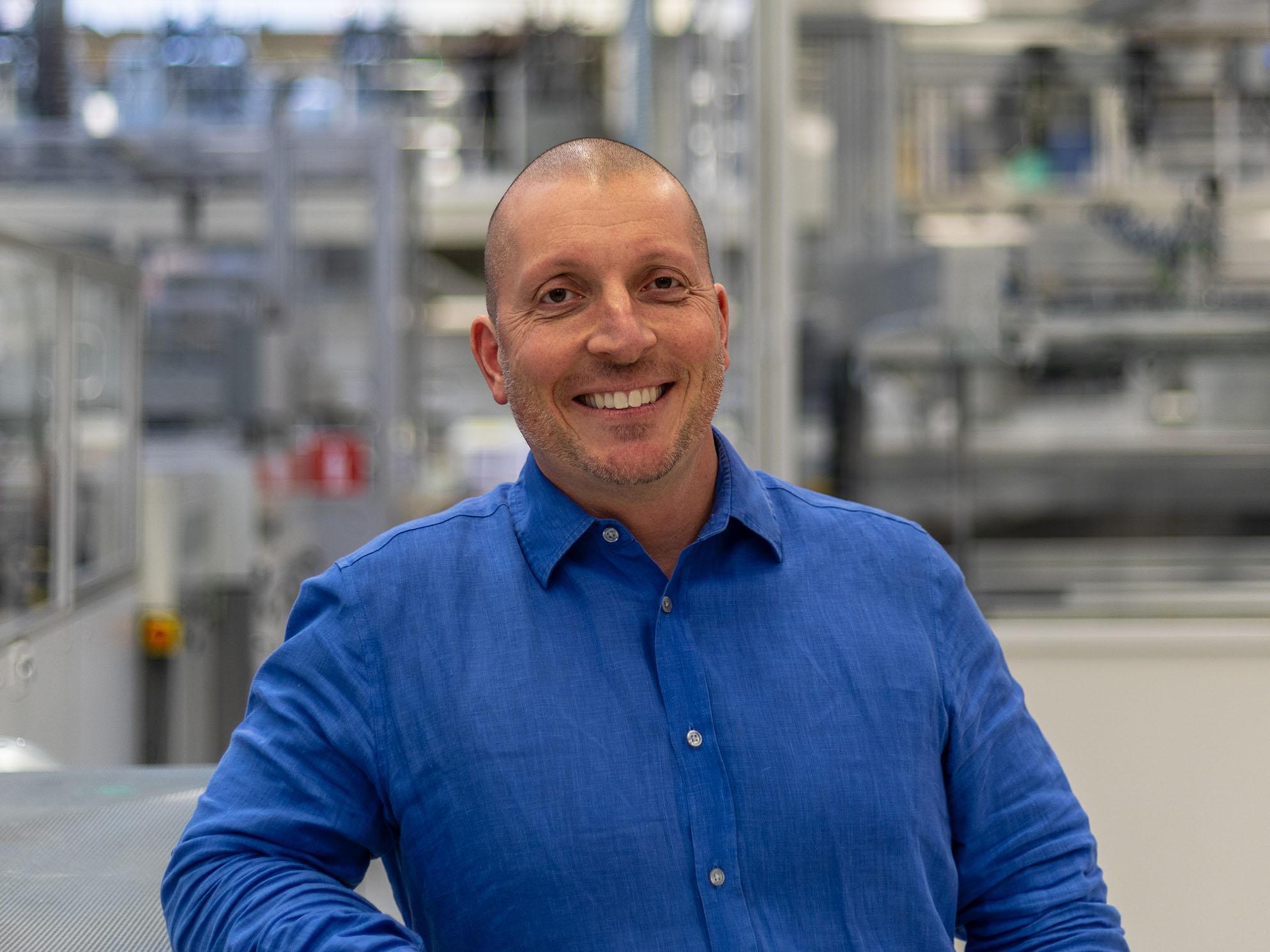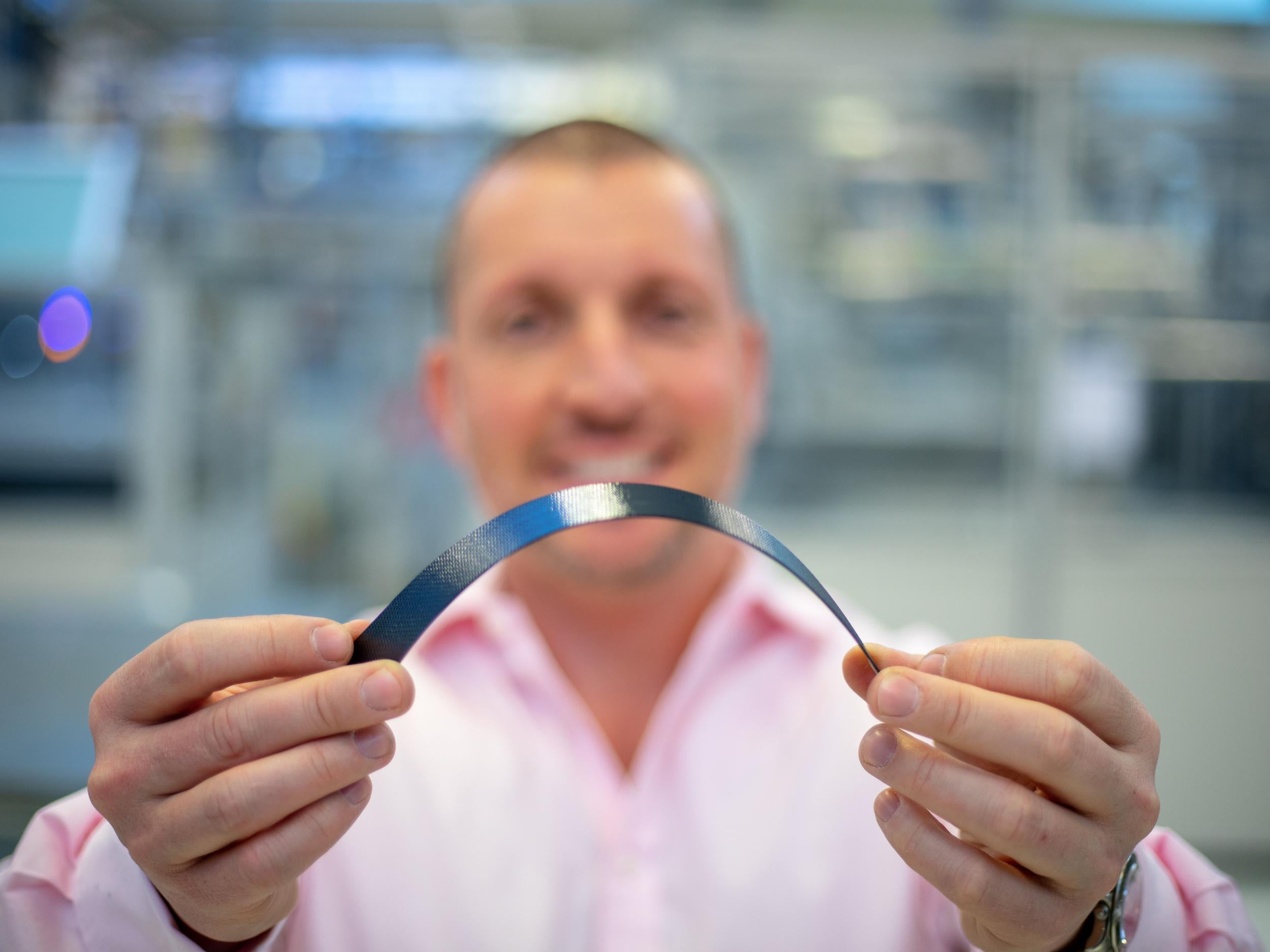How bright spark Giovanni Fili is recharging gadgets using ambient light
The Exeger CEO gives Andy Martin the lowdown on solar cells, self-charging headphones and ‘energy payback’ – plus a quick lesson in Swedish


His headphones were sitting on the table in front of us. All the time we were talking the headphones were charging. But – and it is very big but – there were no wires. No plug, no socket. The headphones were just sitting there, quietly, discreetly, hoovering up photons and converting them into electrons.
I had gone to the Athenaeum hotel in Piccadilly to meet Giovanni Fili, CEO of Exeger, the Swedish company that has come up with a photovoltaic material generating pure energy out of ambient light, natural or artificial.
So, before you ask, no, it’s no good for your phone, because your phone spends most of the time in your pocket, where it’s normally fairly dark. But it’s good for all manner of other electronic equipment, whether it’s indoors or outdoors. I’m usually a bit of a sceptic, but I have to admit that the trick with the headphones knocked me out. I couldn’t have been more impressed if he had conjured up an elephant in the middle of Piccadilly. Or made one disappear.
Fili taught me two new words. Only one of them was Swedish. The Swedish one was “tillit”, which is a palindrome, appropriately enough, because it means mutual trust, going both ways. And the other one was “prosumer”. Although English, this was a new one on me. But it goes with the new technology. Previously, with the older tech, you were only ever a consumer, burning up energy (however unintentionally) from dawn till dusk, and then dusk till dawn. Now, if you only use enough tech, powered up by Exeger, then you can become a prosumer, because you end up producing more energy than you can consume. You become like a one-person wind farm. Or, more specifically, you are solar-powered.
All that sunlight (even when it’s cloudy) – and it’s going to waste. Until now. Now you – or your headphones can harvest all this energy that is flying through space at the speed of light. Because it is light. So your tablet (let’s say) can not only surf the internet but can be surfing light waves at the very same time. And your bicycle helmet can generate a light front and back too. You’re converting light back into light.

At the head of tech companies, you generally find someone who has been inventing stuff in the garage, or an entrepreneur. Giovanni Fili is definitely the second of these. He started off at the age of 15 with a “wholesale candy” company. “Instead of eating, I was selling,” he says. “I ate a lot too though.” After teaching himself to play the trumpet in three months and studying at the Swedish School of Economics, he went on to develop interests in real estate, hotel management, “floorball” (Swedish indoor hockey), and a treatment for diabetes. “I’m totally opportunistic,” he says. “If I love something, I do it.”
But he was also smart enough to join forces with a guy who really was inventing things in his garage. This is where the word tillit comes in. It’s a genuine partnership, between inventive genius and sheer selling power. “Now my attitude is, it has to have a global impact or I’m not interested”, says Fili. “It has to make a difference.”
Now my attitude is, it has to have a global impact or I’m not interested
Fili met his collaborator, Dr Henrik Lindstrom in 2008. Lindstrom had already produced the world’s first solar cell on a flexible plastic substrate. In other words, it was transparent. “We started off thinking about putting it on glass,” says Fili. “The real genesis was when we realised: the window is not the product – the facade is. The wall.” They were on a flight to Stockholm together when they started sketching designs for a non-transparent version, 1mm thick, weighing only 800 grams per square metre.
It’s only taken about a decade of deep tech and “patient capital”, but now they have a factory, with over a hundred people working there, and here is the unusual thing: it’s right in the middle of Stockholm, next to a park, not far from the university. Not somewhere on the periphery or tucked away in an industrial estate. Because it releases no toxic emissions. They use no rare earth elements.
People don’t mind working there or living nearby. It’s about on a par with having solar panels on your roof. They’re not exactly crimping anyone’s style or polluting the environment. If anything they’re actually improving the environment by reducing the need for carbon-generated energy.
You can see why Fili likes to use the phrase “carbon positive”. After 100 hours in the sun, the solar strip produces as much energy as was used to produce it in the first place. After that it’s “energy payback time” and you can start prosuming even while using gadgets and devices as much as you like.
The Exeger system basically works the same as plants (the organic kind), on the principle of photosynthesis, taking sunlight and transforming it into energy. The mini solar cells are printed (using normal printers) onto different types of material and can be fitted to almost anything. You don’t even notice it’s there: it’s hidden tech. You’re not relying on the grid any more. And by doing what you normally do anyway you’re helping the planet.
Exeger are now collaborating with Harman to produce self-charging headphones, JBL Reflect Eternal, and have recently announced a new relationship with Swedish sporting goods company POC to produce safety helmets. You can stick Exeger cells on cars, houses, walls, furniture – Giovanni Fili told me you can even have a “smart” surfboard made out of it. Having surfed for many years and still spending rather more time under waves than I do riding around on top of them, I think this could be the answer to my prayers. To think it was only my surfboard letting me down all this time. The great thing is that even if I’m not actually still attached to the surfboard, I know that it will still be happily self-charging in the sun.
Join our commenting forum
Join thought-provoking conversations, follow other Independent readers and see their replies
Comments